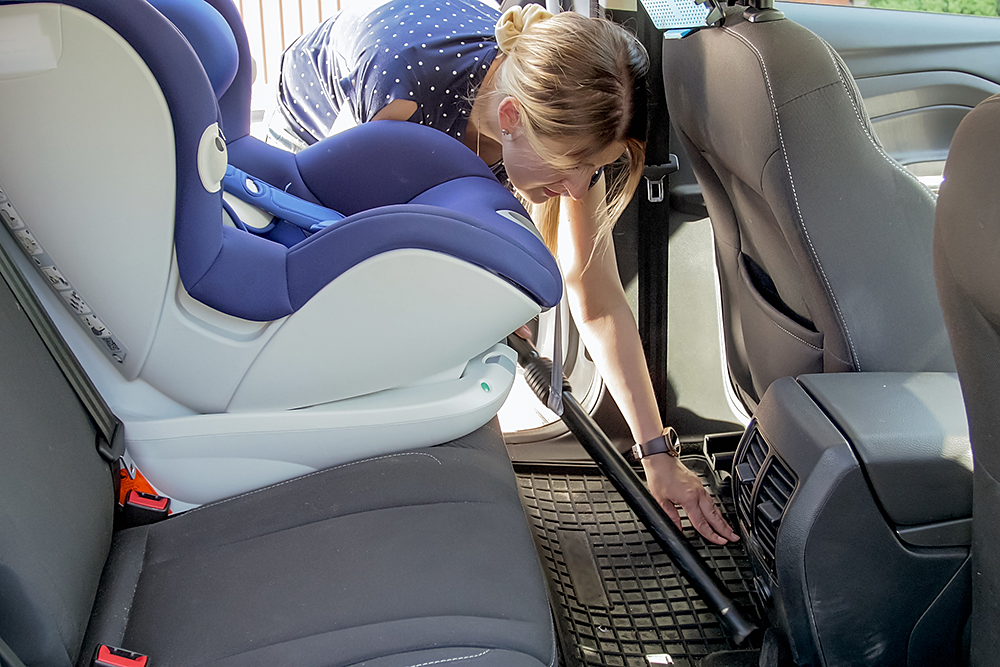When spots and spills get the best of your car's interior

Everyone, including the family pet, is loaded into the car for a long drive to grandmother's house. You just merged the car onto the freeway when someone spills a chocolate shake on the back seat.
Messy spots—spills, dirty paws, biowaste—are inevitable problems encountered on any vacation. The accumulation of grime and soiling can add up to big problems for your vehicle's interior.
"Get that spill off of your interior upholstery as quickly as possible," said Mike Pennington, director of training at Meguiar's, Inc. "Otherwise, it may be more difficult to remove the longer you wait and even potentially introducing mold, fungus and bacterial growth. Then you get odors."
Simply dabbing up the mess won't do. You could create other problems such as permanent stains and hardened areas in cloth fabrics. Pennington recommended the following guidelines for spot treatment when you're on the road this summer:
For carpet and cloth materials:
- Remove as much of the spill or grime as possible with a cotton terrycloth towel. Don't let it sit for hours before cleaning. Fluid may seep underneath the material and cause your car to smell like a locker room.
- Use a stiff nylon brush to straighten and separate the fibers. By removing matted fibers, you can help prevent stiff and unattractive upholstery.
- Vacuum to remove coarse grime. "You don't want to make mud when you spray liquid on carpet dirt," Pennington said.
- Apply cleaning solution-lightly. Don't soak the material.
- Agitate the area a second time with a clean brush.
- Lightly dab the area with a clean terry cloth towel.
"You're actually transferring the stain into the terry cloth towel," Pennington said. "Again, don't oversaturate the area. This helps prevent potential mold, fungus and bacterial growth."
For Rubber materials:
- Remove soil and grime.
- Wipe down the area with all-purpose cleaning wipes or quick detailing solutions made for auto interiors.
- Apply a rubber treatment. Cleaners may strip rubber material of its protection. Some cleaning products provide a coating of UV protection as well. If not, apply a separate coat of rubber protection to help keep the material soft and pliable.
For leather and vinyl, look for wipes or sprays made specifically for those surfaces:
- Clean off the surface with a terry cloth towel.
- Spray leather and vinyl cleaner on a clean towel and apply to the surface. This prevents overspray where it can become a magnet for dirt.
- Apply a reconditioner to keep the leather and vinyl healthy.
"Otherwise, it's like washing your hands with a harsh detergent," Pennington said. "Use a product designed for the specific type of surface, always read the directions and use the right tools."
Article by Jay Alling, editor of Sensible Driver. Write to jay@sensibledriver.com.